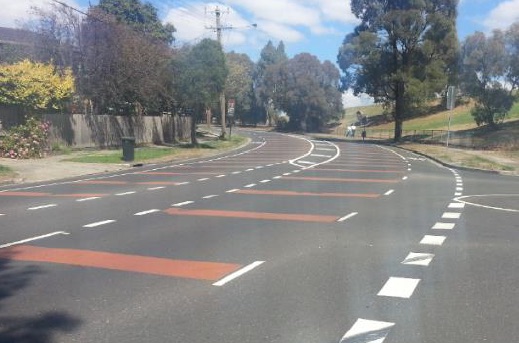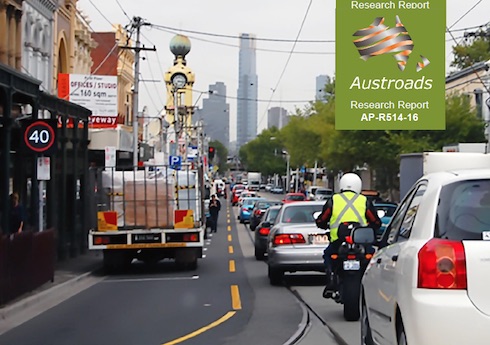Austroads makes no mention of lane filtering in its latest report concerned with achieving “safer” speeds in our urban road network.
The 104-page report titled “Achieving Safe System Speeds on Urban Arterial Roads: Compendium of Good Practice” features a range of suggestions, but none mentions how effective lane filtering is in reducing rear-ender crashes for riders.
This is despite the fact that lane filtering is now allowed in Queensland, NSW and Victoria, and is being trialled in the ACT.
However, the study does refer several times to motorcyclists and “vulnerable road users” which usually includes motorcyclists, cyclists and pedestrians.
It points out the risks to these road users with a UK report showing pedestrians represent 25% of urban injury crashes, followed by motorcyclists at 23% and cyclists at 15%.
The report mentions that that painted surfaces and rumble strips could be dangerous to motorcyclists and that an increase in roadside signs represents an injury risk in a crash, although it doesn’t specifically mention motorcyclists.

The report also doesn’t mention that many of the suggested methods to slow traffic by physical changes to the road (chicanes, raised intersections, speed bumps, etc) would have little or no effect on motorcycle speeds.
However, frequent reference to road narrowing at intersections would have an impact on the ability of riders to filter through traffic.
Austroads is the peak organisation of Australasian road transport and traffic agencies, so its reports are often cited by state and federal governments in laws and enforcement policy.
While this report doesn’t make any recommendations, it does provide a host of observations and suggestions for trials and reports on their effectiveness.
Selected Austroads report highlights
- Mobile speed cameras are up to 15-21% less effective at reducing traffic seed than fixed cameras;
- Electronic speed advisory technology (signs that show your speed or flash a warning to slow down) has potential to be included in any speed enforcement programs;
- It suggests trialling four-way red traffic signals at night time which are only activated to green by an approaching vehicle (although motorcycles are often not detected) or a pedestrian pushing a button;
- The report notes that the maximum speed for survival of a rider in a crash with a car is 20-30km/h and suggests that 30km/g is the optimum speed through intersections; and
- It says there is no evidence of the speed/crash reduction from “green wave” or linked signals that coordinate traffic signals to reward motorists with an uninterrupted passage if they are travelling at the recommended speed, although the report notes it would reduce rear-ender crashes which plague urban riders.


